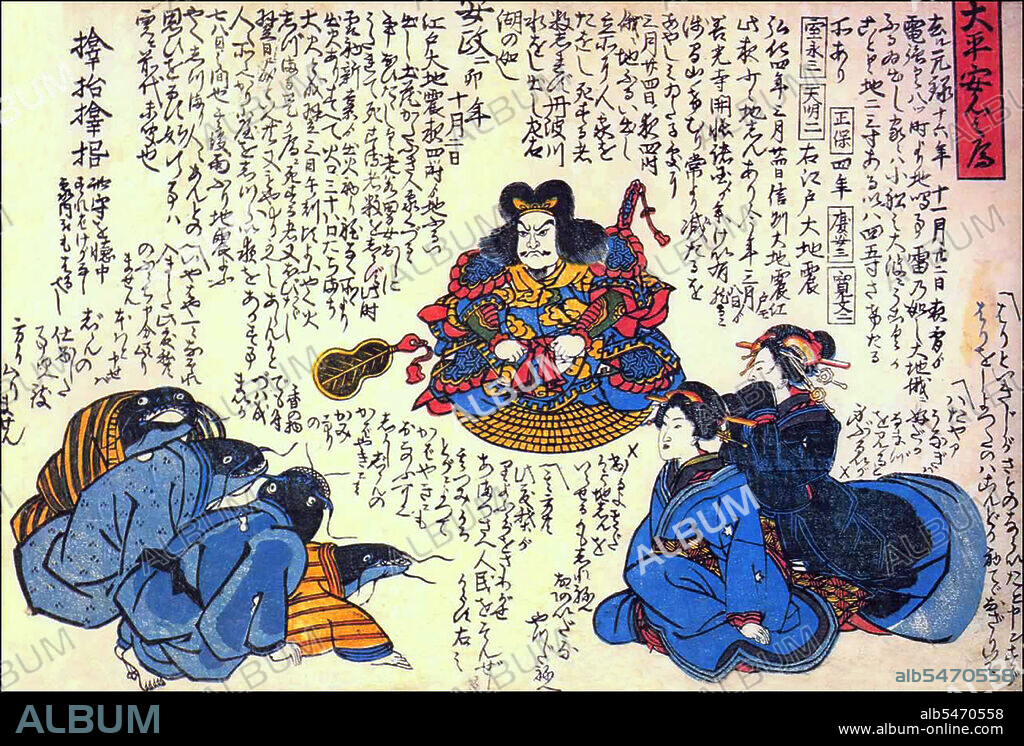alb5470558
Japan: Talisman against earthquake and tsunami,1855. The god Kashima and prostitutes from the Yoshiwara red-light district express their anger toward apologetic catfish responsible for earthquakes.

|
Zu einem anderen Lightbox hinzufügen |
|
Zu einem anderen Lightbox hinzufügen |



Haben Sie bereits ein Konto? Anmelden
Sie haben kein Konto? Registrieren
Dieses Bild kaufen
Titel:
Japan: Talisman against earthquake and tsunami,1855. The god Kashima and prostitutes from the Yoshiwara red-light district express their anger toward apologetic catfish responsible for earthquakes.
Untertitel:
Siehe automatische Übersetzung
The 1855 Ansei Edo earthquake, also known as the Great Ansei Earthquake, was one of the major disasters of the late-Edo period. The earthquake occurred at 22:00 local time on 11 November. It had an epicenter close to Edo (now Tokyo), causing considerable damage in the Kanto region from the shaking and subsequent fires, with a death toll of about 7,000 people. The earthquake also triggered a tsunami. Within days, a new type of color woodblock print known as namazu-e (lit. 'catfish pictures') became popular among the residents of the shaken city. These prints featured depictions of mythical giant catfish (namazu) who, according to popular legend, caused earthquakes and related tsunami by thrashing about in their underground lairs. In addition to providing humor and social commentary, many prints claimed to offer protection as talismans from future earthquakes. The popularity of namazu-e exploded, and as many as four hundred different types became available. The phenomenon ended two months later when the Tokugawa government, which maintained a strict system of censorship over the publishing industry, forbade production. Only a handful are known to survive today.
Bildnachweis:
Album / Pictures From History/Universal Images Group
Freigaben (Releases):
Model: Nein - Eigentum: Nein
Rechtefragen?
Rechtefragen?
Bildgröße:
5215 x 3530 px | 52.7 MB
Druckgröße:
44.2 x 29.9 cm | 17.4 x 11.8 in (300 dpi)
Schlüsselwörter:
ABERGLAUBE • ASIEN • ASIEN, KONTINENT • ERDBEBEN • GEMAELDE • GESCHICHTE • JAPAN • JAPANER • JAPANERIN • JAPANISCH • KONTINENT, ASIEN • KUNST • MALEREI • ORMNAMENT: JAPANISCH • RELIGION • TSUNAMI • ZEITGESCHICHTE
 Pinterest
Pinterest Twitter
Twitter Facebook
Facebook Link kopieren
Link kopieren Email
Email
